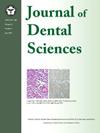Accuracy and safety of real-time navigation during insertion of temporary anchorage devices - A randomized clinical trial
IF 3.4
3区 医学
Q1 DENTISTRY, ORAL SURGERY & MEDICINE
引用次数: 0
Abstract
Background/purpose
Temporary anchorage device (TAD) is one of the applications of dental implants that facilitate orthodontic treatment. However, there are possible complications in TAD surgery with the freehand technique. Navigation has been used in dental implantation with acceptable results. There has been no published study on the use of real-time navigation for TAD insertion.
Materials and methods
This was a split-mouth design randomized clinical trial in which the control group used a surgical guide (N = 16) for TAD insertion surgery and the experimental group used navigation for surgery (N = 16). We also performed a negative control by retrospective database survey to evaluate the freehand technique (N = 29). By comparing the platform center deviation and angular deviation of the control group, experimental group, and negative control, we can draw conclusions about the accuracy and safety of TAD insertion surgery using each method.
Results
The platform center deviation in the surgical guide group and the navigation group showed a statistical difference (P < 0.05), indicating that the surgical guide provided better position control. There was no statistical difference in terms of angular deviation.
Conclusion
The clinical use of real-time navigation in the insertion of TAD offers no more significant advantages than the freehand technique in terms of position and angular control. No immediate complications requiring implant removal occurred in this study. The combined technique has shown a trend in accuracy and safety, but a larger number of samples are still needed for statistical analysis to draw a definitive conclusion.
插入临时锚定装置时实时导航的准确性和安全性-一项随机临床试验
背景/目的临时锚固装置(TAD)是牙种植体在正畸治疗中的应用之一。然而,徒手技术在TAD手术中可能存在并发症。导航技术已应用于种植牙,效果良好。目前还没有发表关于使用实时导航进行TAD插入的研究。材料与方法采用裂口设计随机临床试验,对照组(N = 16)采用手术导尿管进行TAD插入手术,试验组(N = 16)采用导航进行手术。我们还通过回顾性数据库调查进行阴性对照,以评估徒手技术(N = 29)。通过比较对照组、实验组和阴性对照组的平台中心偏差和角度偏差,我们可以得出每种方法的TAD插入手术的准确性和安全性。结果手术引导组与导航组平台中心偏差差异有统计学意义(P <;0.05),说明手术指南提供了更好的位置控制。在角度偏差方面没有统计学差异。结论临床应用实时导航技术植入TAD在位置和角度控制方面与徒手技术相比没有明显优势。在本研究中没有立即发生需要移除种植体的并发症。该组合技术在准确性和安全性方面呈现出趋势,但仍需要大量的样本进行统计分析才能得出明确的结论。
本文章由计算机程序翻译,如有差异,请以英文原文为准。
求助全文
约1分钟内获得全文
求助全文
来源期刊

Journal of Dental Sciences
医学-牙科与口腔外科
CiteScore
5.10
自引率
14.30%
发文量
348
审稿时长
6 days
期刊介绍:
he Journal of Dental Sciences (JDS), published quarterly, is the official and open access publication of the Association for Dental Sciences of the Republic of China (ADS-ROC). The precedent journal of the JDS is the Chinese Dental Journal (CDJ) which had already been covered by MEDLINE in 1988. As the CDJ continued to prove its importance in the region, the ADS-ROC decided to move to the international community by publishing an English journal. Hence, the birth of the JDS in 2006. The JDS is indexed in the SCI Expanded since 2008. It is also indexed in Scopus, and EMCare, ScienceDirect, SIIC Data Bases.
The topics covered by the JDS include all fields of basic and clinical dentistry. Some manuscripts focusing on the study of certain endemic diseases such as dental caries and periodontal diseases in particular regions of any country as well as oral pre-cancers, oral cancers, and oral submucous fibrosis related to betel nut chewing habit are also considered for publication. Besides, the JDS also publishes articles about the efficacy of a new treatment modality on oral verrucous hyperplasia or early oral squamous cell carcinoma.
 求助内容:
求助内容: 应助结果提醒方式:
应助结果提醒方式:


